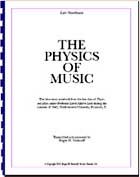 Lloyd Loar’s is a name spoken in hushed and reverential tones when serious students of fretted instruments get together to discuss their shared passion. In the bluegrass world especially, his contributions are remembered with a great debt of gratitude.
Lloyd Loar’s is a name spoken in hushed and reverential tones when serious students of fretted instruments get together to discuss their shared passion. In the bluegrass world especially, his contributions are remembered with a great debt of gratitude.
During a brief period in the early 1920s, Loar worked for the Gibson company in Kalamazoo, MI and introduced a number of design innovations, many of which are still in use today. Chiefly, his fusing of the design and construction techniques of violin building to the mandolin family of instruments launched an eight string revolution, and gave us what we now generically describe as the F-style instrument. The mandolins which he signed during his tenure at Gibson command prices that dwarf anything they have made since.
Roger Siminoff is one of the modern era’s most celebrated historians of Lloyd Loar, and a leading luthier in his own right. His biographical sketch of Loar’s life (published online) is regularly referenced as the most accurate, and is loaded with photos and details of his life, both before and after his time with Gibson.
Siminoff has just published a book that will be of interest to Loar-ophiles the world over, as well as anyone with an interest in the melding of scienece and music. The Physics Of Music is taken from a detailed set of lab notes transcribed by a student in one of Loar’s classes starting in June 1943 and continuing until his death later that year. The notes have been preserved since they were donated to Loar’s widow, and Siminoff has copied these detailed notes word-for-word, and included scans of the illustrations as well.
Roger describes the contents as follows:
“Professor Loar taught at Northwestern University for 13 years and while he taught other subjects, The Physics of Music was his predominant class. The School of Music catalog listed Loar’s class for 1944 as including electronics and it became a 4-credit class (where previous classes were 3-credits). Unfortunately, he didn’t live to give that class. I have a listing of his classes on my web site at this page here.
While the content might have been new and interesting for the students, I don’t think anything in this class was “groundbreaking” as far as the music industry is concerned. While the groundwork on musical acoustics was done by folks as early as Pythagoras (570-490 BC) through to Hermann Helmholtz (1821-1894), and the major development of acoustical instruments done by the Amati family, Guanari, and Stradivari (in the period 1500s to 1700 AD), in 1943 Loar was reporting the science of musical acoustics as it was in his day. He was sharing what was fairly well known and documented at that time.
I found quite a bit that both surprised and enlightened me including: 1) specific reference to tuned bodies and air chambers of violin from the great makers, 2) his comments on how “lute family” instruments (which in his mind included mandolins) didn’t measure up to violin family instruments, 3) and generally, his rich understanding of musical acoustics and how he presented it to a college class.
His conclusion – the last class – probably would have been very interesting, but he didn’t live to give Lecture 12. I think what is important in this piece is that we hear it from Professor Loar, and we get a sense of his diversity of thought.”
The book runs to 44 spiral-bound pages and is available exclusively from Siminoff Banjo and Mandolin.







